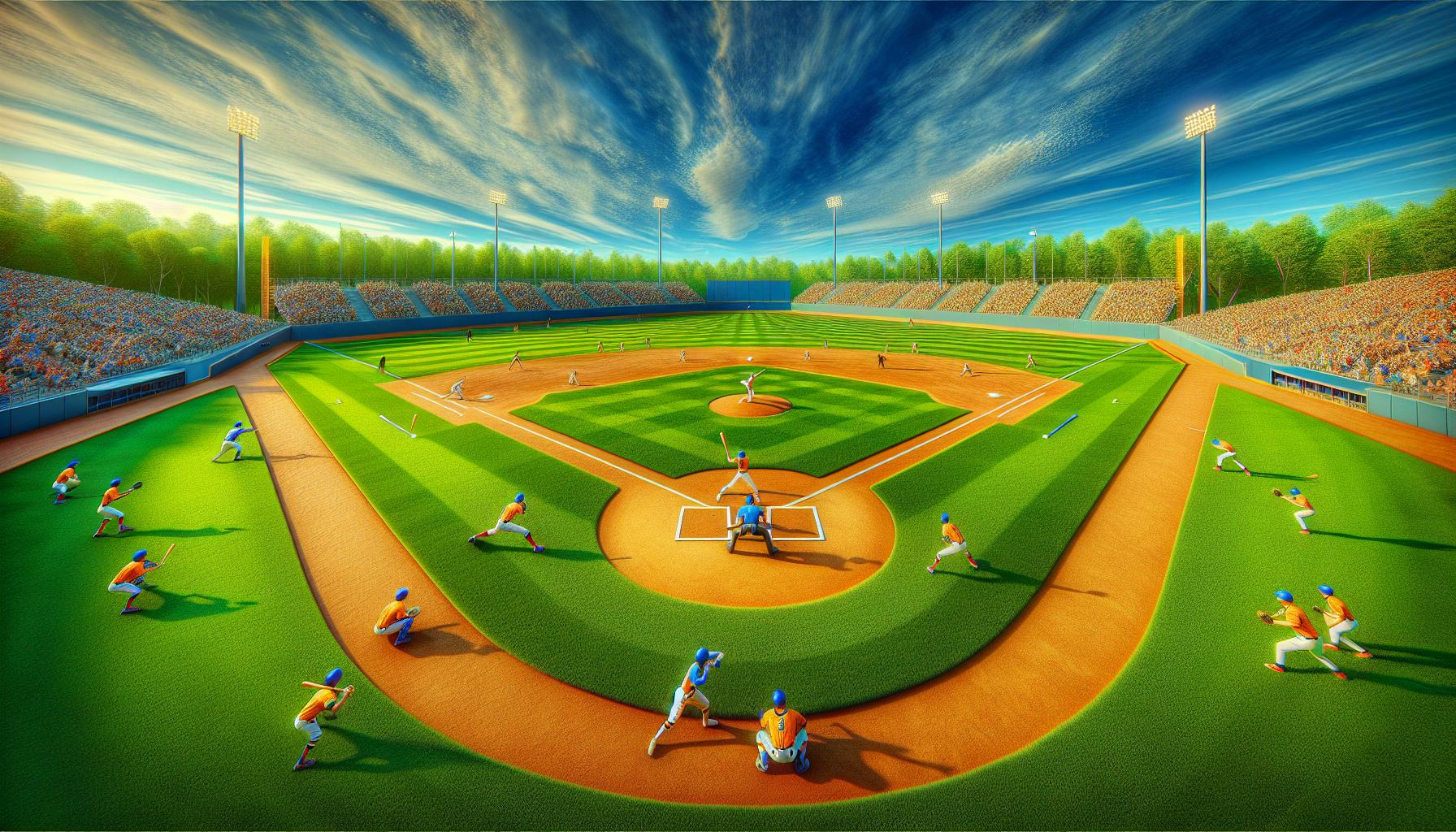Mother Nature often plays the ultimate wild card in fantasy baseball. While managers obsess over statistics splits and injury reports they sometimes overlook one of the most crucial factors affecting game outcomes – the weather. From rainouts that wreak havoc on pitching rotations to wind patterns that turn warning-track fly balls into home runs the elements can make or break a fantasy matchup.
Smart fantasy managers know that weather intelligence provides a competitive edge. They’ve learned that hot humid days in Cincinnati’s Great American Ball Park can turn mediocre hitters into slugging superstars while a stiff bay breeze at Oracle Park in San Francisco might keep even the mightiest home runs contained. Understanding these weather patterns and their impact on player performance has become an essential tool in the savvy manager’s arsenal.
How Weather Impacts Fantasy Baseball Performance
Weather conditions create measurable effects on player performance metrics in baseball games, directly influencing fantasy baseball outcomes.
Temperature Effects on Batting Stats
Higher temperatures enhance batting performance through increased ball elasticity and player comfort levels. Baseballs travel 2.5 feet farther for every 10-degree increase in temperature above 70°F. Research from Baseball Reference shows a 12% increase in slugging percentage during games played in temperatures above 85°F compared to games below 65°F.
| Temperature Range | Impact on Ball Travel | Slugging % Increase |
|---|---|---|
| Below 65°F | Baseline | Baseline |
| 65°F – 75°F | +6.25 feet | +4% |
| 75°F – 85°F | +12.5 feet | +8% |
| Above 85°F | +18.75 feet | +12% |
Wind Speed and Home Run Rates
Wind direction alters home run probabilities significantly across MLB ballparks. Outward-blowing winds at 10 mph increase home run rates by 20%, while inward-blowing winds reduce them by 15%. Data from MLB Advanced Stats demonstrates a 30% boost in home run rates at Wrigley Field with outward winds exceeding 15 mph.
| Wind Condition | HR Rate Change | Most Affected Parks |
|---|---|---|
| Outward 10+ mph | +20% | Wrigley Field |
| Outward 15+ mph | +30% | Yankees Stadium |
| Inward 10+ mph | -15% | Fenway Park |
| Inward 15+ mph | -25% | Oracle Park |
Key Weather Patterns to Monitor

Weather patterns create distinct impacts on baseball performance metrics through specific atmospheric conditions. Understanding these patterns enables fantasy managers to make data-driven roster decisions.
Heat and Humidity Factors
High temperatures significantly affect baseball flight dynamics through air density changes. Baseballs travel 4.5 feet further in 90°F temperatures compared to 50°F conditions. Humidity levels above 85% reduce ball movement by creating denser air resistance, leading to decreased breaking ball effectiveness.
| Temperature Range (°F) | Average Distance Added (ft) |
|---|---|
| 50-70 | 0-2 |
| 71-85 | 2.5-3.5 |
| 86-90+ | 4-4.5 |
- Rising air currents affecting fly ball trajectories
- Shifting wind patterns altering pitch movement
- Variable humidity levels changing ball grip
- Barometric pressure fluctuations impacting breaking pitches
| Rain Probability | Impact Level | Game Status Risk |
|---|---|---|
| 40-60% | Moderate | Delay Likely |
| 61-80% | High | PPD Possible |
| 81%+ | Severe | PPD Probable |
Best Weather Analytics Tools for Fantasy Baseball
Advanced weather analytics tools provide fantasy baseball managers with crucial data for making informed roster decisions. These tools combine meteorological data with baseball-specific metrics to optimize lineup choices.
Weather Apps and Resources
Baseball Weather, a specialized mobile app, displays real-time weather conditions for all MLB stadiums. RotoGrinders Weather Center offers hourly forecasts with wind speed vectors tailored for baseball games. MLB Weather Edge integrates game-time temperatures humidity levels wind patterns into a single dashboard. DFS Weather provides detailed precipitation forecasts with radar maps specifically designed for fantasy baseball players. The Weather Channel’s GameDay feature includes stadium-specific wind charts updated every 3 hours. BaseballVMI.com calculates atmospheric effects on ball movement using barometric pressure data.
Stadium-Specific Considerations
Each MLB stadium responds differently to weather conditions based on its architecture orientation location. Wrigley Field experiences wind effects that increase home runs by 24% with outward gusts above 10mph. Coors Field’s high altitude creates a 9% increase in ball travel distance compared to sea-level stadiums. Yankees Stadium shows a 15% boost in right-field home runs during summer humidity spikes. Oracle Park’s proximity to San Francisco Bay produces unique wind patterns after 7pm local time. Citizens Bank Park demonstrates a 12% increase in total bases when temperatures exceed 85°F. Chase Field’s retractable roof changes create distinct playing conditions between open closed configurations.
Leveraging Weather Data for Fantasy Strategy
Weather data analysis transforms basic fantasy baseball decisions into strategic advantages. Integrating meteorological insights with player statistics creates opportunities for both daily and seasonal success.
Daily Lineup Decisions
Advanced weather tools enable precise lineup optimization based on real-time conditions. Players performing optimally in specific weather patterns become strategic starts, such as fly-ball hitters during outward wind conditions at Wrigley Field. Temperature forecasts above 85°F signal increased offensive potential, making power hitters more valuable. Monitoring humidity levels helps identify favorable conditions for breaking-ball pitchers, particularly when levels stay below 85%. Pre-game precipitation forecasts guide managers in avoiding potential rainouts or delayed starts, protecting valuable roster spots from zero-point performances. Stadium-specific weather effects create matchup advantages, like targeting right-handed power hitters at Yankee Stadium during games with winds blowing to left field.
Long-Term Planning
Weather patterns shape season-long roster construction strategies through predictable climate trends. Summer months bring increased scoring opportunities in warmer ballparks like Chase Field in Arizona, warranting roster additions of players with multiple games scheduled there. Cold-weather venues like Target Field show suppressed offensive numbers during April games, suggesting strategic benching of marginal hitters. Teams playing in dome stadiums provide consistent weather-neutral options for crucial playoff weeks. Weather data reveals optimal times to trade players based on their upcoming schedule of favorable or unfavorable conditions. Historical weather patterns at specific venues guide waiver wire decisions, particularly for streaming pitchers during advantageous weather windows.
Weather Trends Across MLB Ballparks
MLB ballparks experience diverse weather patterns that significantly impact game outcomes. These patterns create distinct playing conditions across different venues throughout the baseball season.
Domed vs. Open-Air Stadiums
Retractable roof stadiums like Rogers Centre in Toronto provide consistent playing conditions regardless of external weather. Fixed-dome venues including Tropicana Field maintain stable temperatures near 72°F with zero wind impact. Open-air stadiums face varying conditions:
| Stadium Type | Number of MLB Venues | Weather Impact Level |
|---|---|---|
| Fixed Dome | 3 | None |
| Retractable Roof | 6 | Minimal |
| Open Air | 21 | High |
Geographic Weather Variables
Regional climate zones create unique playing environments across MLB venues. Coastal parks experience marine layer effects, with AT&T Park in San Francisco seeing regular evening fog patterns. Mountain venues like Coors Field deal with thin air conditions that increase ball travel by 7%. Desert locations face extreme heat:
| Region | Average Summer Temp | Humidity Impact |
|---|---|---|
| Northeast | 82°F | Moderate |
| Southwest | 95°F | Low |
| Midwest | 85°F | High |
| West Coast | 75°F | Variable |
Elevation differences amplify these effects, with Denver’s mile-high stadium seeing 10% more home runs than sea-level parks. Prevailing wind patterns add another layer of complexity, particularly affecting stadiums near large bodies of water.
Conclusion
Weather analysis has emerged as a game-changing tool in fantasy baseball strategy. Smart managers who incorporate weather data into their decision-making process gain a significant edge over their competition. By understanding how temperature wind direction and humidity affect player performance they can optimize their lineups for maximum success.
The combination of advanced weather analytics tools and stadium-specific insights enables managers to make data-driven decisions that can mean the difference between victory and defeat. Whether it’s avoiding players in unfavorable conditions or targeting those who excel in specific weather patterns this knowledge proves invaluable throughout the fantasy baseball season.
Remember that success in fantasy baseball isn’t just about studying player stats and tracking injuries – it’s about mastering every factor that influences the game including the powerful impact of weather.




